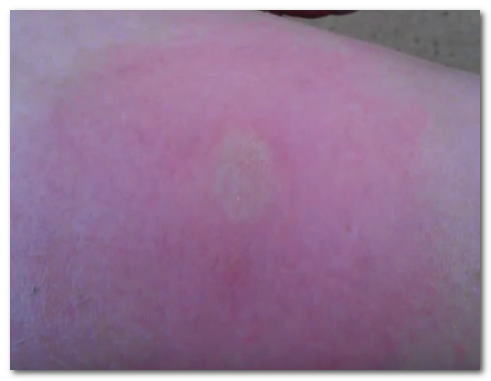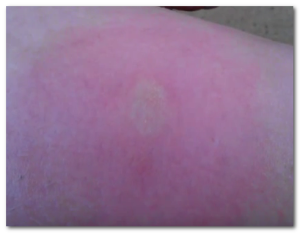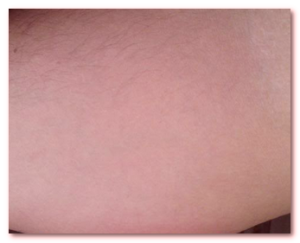Also known as deer flies, forest flies, and March flies, horseflies are big flies that are categorized under the Tabanidae insect family, of the order Diptera. The biggest species from the true flies family, a horsefly looks similar to a housefly, but is darker and much bigger, around 2.5 cm in size. A horsefly bite is marked by pain, reddish bumps, and itchiness.
Horsefly facts
- There are over 3000 species of horseflies present around the world. They breed and live in wet or marshy regions that are near water bodies and tend to be more active in sunny and warm weather.
- The season, location, and time of day for mating tends to differ as per specific species of horseflies. The female horsefly lays flat, elongated, and blackish eggs on stones or plants that are next to a water body. The larvae upon hatching drop into damp mud, moist soil, or water. Larvae do not have legs and look like maggots. The body is slightly flattened, but each body segment features fleshy projections that helps move around. They feed on other insect larvae or on snails.Winters are mostly spent as larvae; in spring they pupate and become winged adults during early summer. The lifespan of an adult horsefly is a few days.
- Unlike female horseflies, a male horsefly does not have dedicated mouth parts that help suck blood off animals or humans. Instead they suck on pollen and nectar and thus help pollinate different flora. After laying eggs, female horsefly need blood to survive. This is the time they start biting animals and humans.
- A female horsefly usually feeds on mammals, but can sometimes such the blood of reptiles, birds, and even amphibians. A horsefly bite is painful because it uses its serrated saw-blades-like mouth parts to cut a hole onto the skin and then such the blood that oozes out. Several horseflies on a host can suck nearly 3 ounces of blood per day from the prey.
Symptoms of a horsefly bite
A horsefly bite is a cut made to the skin with the help of its jagged mandible-like scimitars. The upper layer of the flesh is sliced off; this feels just as if needles are pricking on the skin. The blood that subsequently flows out is then licked by the horsefly. A horsefly bite can sometimes be more painful and discomforting than a bee sting. As the skin is torn off, a horsefly bite takes longer time to heal.
Some symptoms of a horsefly bite are listed below:
- Immediate development of a reddish lump on the skin. The tissues that surround the area of the horsefly bit release histamine to that area, thereby causing the inflamed and itchy bump.
- Patients may experience reddish or pink swelling along with itchiness around the eyes and lips. They may also feel dizzy and weak.
- Allergic reactions to the horsefly bite can cause wheezing, skin rashes, and hives eruption.
- Infection of the horsefly bit area may be marked by pus creation, redness, and intense pain. If the bite area is infected, then immediate medical attention is necessary.
Horseflies are carriers of diseases like anthrax, rabbit fever, and tularemia. Infection and blood borne illnesses caused by a horsefly bite can take many days for a full cure. In rare cases, such bites can cause life-threatening anaphylactic reactions in humans. In animals, a horsefly bite can cause elevated levels of blood loss, especially if a large number of horseflies feast on an animal. Increased blood loss in animals may sometimes result in weakness and even fatalities. Both animals and humans may experience anemia due to blood loss from a horsefly bite.
Treatment of a horsefly bite
Patients who think they have been bitten by a horsefly should seek immediate medical attention, especially if you experience breathing difficulties or other anaphylactic allergic reactions.
Some home remedies for a horsefly bite are listed below:
- Use water and an antiseptic soap to gently clean the bite wound. Then pat it dry.
- If you do not have immediate access to water or soap, then you may alleviate the swelling by slathering the wound with your saliva. The human saliva has Histatin protein which has healing qualities.
- Itching and swelling can be alleviated via application of a topical hydrocortisone cream. You may then cover the horsefly bite wound with a loose gauze bandage.
- Do not scratch the wound to ease itchiness as it will facilitate the onset of secondary infections.
- Antihistamine tablets can help find relief from the discomfort.
- Swelling and pain can be eased by applying aloe vera juice, vinegar, ice cubes, or a cooling pad on the bite area.
- Mud therapy can help find relief from pain. Topical use of Epsom salt, baking soda paste, raw garlic or onion, and/or honey is also helpful.



